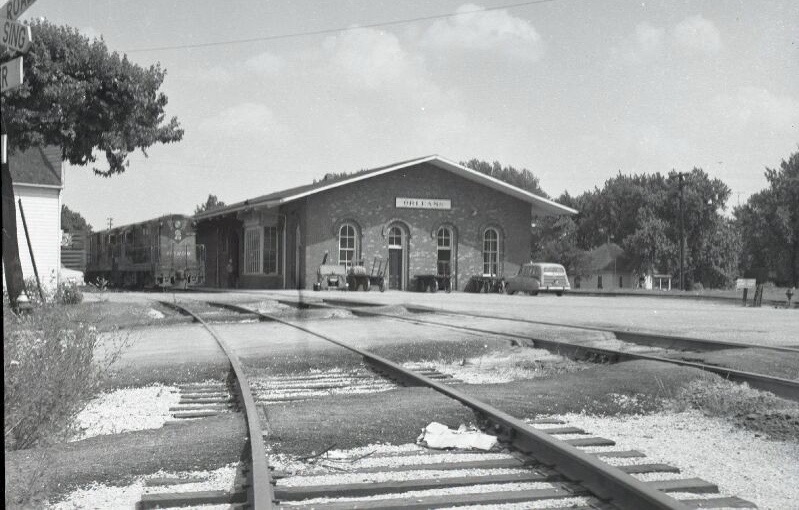History of Orleans, IN

Platted in 1815, Orleans stands as the oldest town in Orange County. Founded two months after Andrew Jackson’s famous victory over the British at New Orleans, the settlers named their new town to honor this event. Samuel Lewis, one of the founders, later became a prominent figure in Texas after he fought for Texas independence from Mexico and served as a senator in the first two congresses of the Republic of Texas under Sam Houston’s presidency.
The original plat of the town was recorded in Salem while Orange County was a part of Washington County and Indiana was still a territory and had not yet entered statehood. It was dated March 11, 1815 and was signed by Samuel Lewis and William McFarland as owners of the land, and by Samuel Alexander, a surveyor. This original plat shows the town had six streets running east and west and seven streets running north and south. In the center of town was Congress Square consisting of several lots which were to remain for the purpose of erecting “any building for county, territory, or state as deemed necessary by the citizens of the town.” At present, this area is the town park.
Dogwood Capital of Indiana
Dogwood trees line Ind. 37 in northern Orange County. The dogwood is the trademark of Orleans. “Operation Dogwood,” launched in the mid 1960’s has succeeded in its goal of having hundreds of the trees planted along roads, in the historic town park square and in yards. The annual Dogwood Festival is held in late April.
Historic Orleans Town Square

The Historic Orleans Town Square is called “Congress Square.” meaning public square, or it is referred to as “Seminary Square.” after the Orleans Academy that stood there from 1864 to 1963. Whatever it is called, the square has something for everyone: shelter houses, playground equipment, a recently restored picturesque 1926 brick bandstand or gazebo, vintage gas lights, Veterans Memorial area etc. Visitors also enjoy the beautiful fountain and sculpture located in the center of the park.
The Railroad

In the winter of 1851-52, the L.N.A. & Railroad (then called the New Albany-Salem Railroad) was built to come through the town.
To secure the railroad for Orleans, the Citizens gave $40,000, all by private subscription,
which considering the time and size of the town was a remarkably large amount.
The railroad curved to pass through the town and add greatly to the development of the community.
Three hotels, with livery stables, were needed to accommodate the travelers brought into the town by the railroads.
Stetson House

One of the more famous stories linked with Orleans pertains to the loves of Elizabeth, or Libbie Shindler. While visiting her relatives in Philadelphia, the young lady from Orleans met the wealthy hat manufacturer and widower John B. Stetson, and they were married soon afterwards. Elizabeth became heiress to the Stetson hat fortune after her husband’s death in 1906. Elizabeth next married a Portuguese nobleman and took the title of countess.
While she was Mrs. Stetson, her husband presented a house to her. The house was precut and fabricated in Philadelphia. Imported workers constructed the house in Orleans around 1894. The house is known as the “story book house,” or “house that hats built.”
More About Orleans, Indiana
As early as 1816, Bishop Roberts, a Methodist circuit rider, began preaching in Orleans with meetings held in the homes of the pioneers. Very early in the 1820’s, a Methodist Church was built. This was the first deed of a church property in the records or Orange County. Down through the years, churches of other denominations have been built and with enthusiastic membership do not hesitate to work together for the spiritual welfare of the community.
In the fall of 1823, the people of Orleans resolved to have a school and accordingly fitted a small house. In 1831, the first school building within the limits of the town was erected on Congress Square. From these humble beginnings, the school system has changed and expanded until now two modern schools meet the needs of a growing and thriving community.
In 1829, Orleans was made an incorporated town, but at that time, the town was too small to support the municipal expenses. Therefore, efforts to maintain the corporation was abandoned. In 1865, the town again incorporated and the result has been a beautiful, prosperous town.

